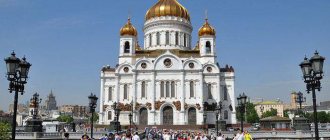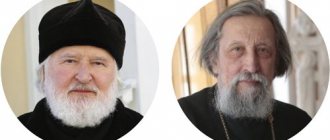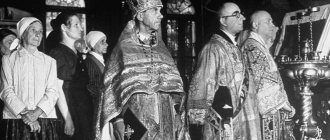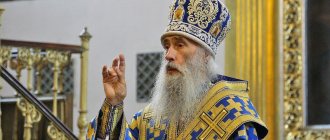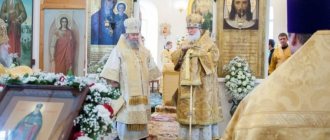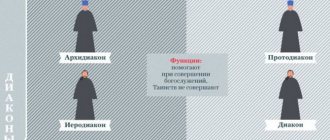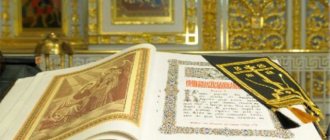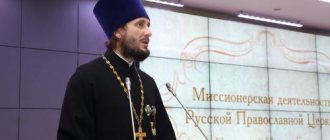In 1550, the young Tsar Ivan IV was faced with the task of weakening the influence and power of the church, as well as secularizing the monastery lands. For this purpose, it was decided to hold the Hundred-Glavy Council of Ivan the Terrible. In addition to the Tsar himself and representatives of the highest clergy, members of the Boyar Duma also participated in the cathedral, since this event affected both spiritual and state issues. As for the year of convening the Council of the Hundred Heads, it was supposed to take place in 1551.
Stoglavy Cathedral of Ivan the Terrible
As a result of this event, Stoglav was compiled, the definition of which means a collection of decisions adopted at the meeting of the Stoglavy Council. This document had a huge impact on all subsequent Russian history, since the results of the council regulated both issues related to church lands and the relationship between state law and religious law. It was Stoglav 1551 that became one of the main sources for researchers studying the history of Russia in the 16th century.
Why was the cathedral named Stoglavy
The Council of the Stoglavy is the very unification of the authorities and the clergy to resolve pressing issues. The book in which all the decisions of the meeting were reflected is usually called Stoglav. Thus, Stoglav is a collection of resolutions of the Church and Zemsky Council of 1551.
The Stoglavy Council was convened on the initiative of Ivan the Terrible
The book got its name from the number of parts it contains. During editing, the document was divided into 100 chapters. The editors of the document were afraid that careless scribes, when rewriting the resolutions of the council for distribution, might miss what they considered to be insignificant parts of Stoglav. Therefore, the document had to be structured so that the loss of even a small part of information would not go unnoticed.
History of the event
However, the convening of this council stands out against this background. Here the main topic was the interaction of state and church law, including in the property sphere.
To divide the spheres of influence of spiritual and state power while simultaneously strengthening the hierarchical vertical of both in order to strengthen and centralize the Russian state - this was precisely what became the common denominator of the issues and decisions of the council.
Background and reasons for carrying out
Having got rid of the Horde yoke at the end of the 15th century and begun collecting lands around Moscow as the capital city, the country was actively strengthening itself. The Rurik dynasty became related to the Byzantine Palaiologos, and the concept of Russia as the Third Rome and the last sovereign stronghold of Orthodoxy grew stronger. The grandson of the Greek princess Ivan the Terrible takes the royal title for the first time in Russian history.
However, against this background, the essentially Byzantine question becomes relevant - the “symphony” of church and state with the political dominance of the latter. It manifested itself especially strongly and acutely in property issues - monasteries in Rus' were among the largest landowners. Church law also needed to be refined and regulated, especially in the context of secular issues. All these problems are brought to the council.
Venue and participants
The council was convened on the initiative of Ivan the Terrible and was held in Moscow from February to May 1551. However, the date of the event is disputed. There is a version that the event did not start on February 23, but had already ended, and then there was only the preparation of materials - until May inclusive. State bodies were represented by the tsar himself, princes and members of the Boyar Duma.
Also present were the main hierarchs of the Russian Orthodox Church at that time:
- Macarius, Metropolitan of Moscow and head of the Russian Orthodox Church.
- Akakiy, Bishop of Tver.
- Gury, Bishop of Smolensk.
- Cassian, Bishop of Ryazan and Murom.
- Cyprian, Bishop of Perm and Vologda.
- Nikandr, Archbishop of Rostov, Yaroslavl and Belozersky.
- Savva, Bishop of Krutitsky, Sarsky and Podonsky.
- Tryphon, Bishop of Suzdal and Tarusa.
- Theodosius, Archbishop of Novgorod and Pskov.
- Theodosius, Bishop of Kolomna and Kashira.
Cathedral structure
As is commonly believed, the meeting opened with an opening speech from the Tsar, who read his message to the participants. In it, the autocrat complained about his difficult childhood and repented of his sins. Next we talked about the Law Code, adopted at the first Zemsky Council in 1549. This document was now finally approved.
The code of law has become one of the most important secular legal documents in Russian history.
It contained 100 articles and reflected the following changes in legal practice:
- local power was limited;
- the rights of representatives of the service class were expanded;
- streamlining the relationship between the feudal lord and the serf, the rights of the peasant community to self-government;
- “progressive” scale of fines - depending on the social status of the plaintiff;
- regulation of the rules of judicial combat.
The collection of adopted decisions, known as the Stoglav (named for the number of chapters it contains), outlines the program and the range of topics discussed. In general, the scheme is as follows: participants answer questions proposed by the king.
The distribution by chapter is as follows:
- Opening of the cathedral, participants and topics (chap. 1-4).
- The first part of the royal questions (chapter 5).
- Answers (chap. 6-40).
- The second part of the royal questions (chapter 41).
- Answers (chap. 42-98).
- Mention of the embassy to the Trinity Monastery (chapter 99).
- Answers of Metropolitan Joasaph, comments and additions (chapter 100).
- The verdict on the estates (chapter 101, added later to the main list).
Basic provisions
An analysis of Stoglav’s materials shows that at the council all the main aspects of church life were comprehensively considered, and the current law of the Russian Church was collected together and systematized.
Moreover, in addition to the Scripture itself and the sacred canon, the church charter of Prince Vladimir, the Helmsman's Books, earlier orders of the hierarchs and the resolutions of the church council of 1503 were used.
In general, the provisions dealt with the following topics:
- unification of church rites and worship;
- discipline and moral character of the clergy;
- work of church courts;
- way of life of monasteries;
- strengthening faith among the people and fighting the remnants of paganism.
Issues to be resolved
The materials of the cathedral contain 69 questions asked by the king to those gathered.
They are divided into two lists, numbered and can be divided into the following groups:
- fiscal issues and replenishment of the state treasury;
- management of affairs in monasteries;
- ordering of worship;
- prejudices and remnants of pagan beliefs among the people.
Participants of the cathedral
The Council of the Hundred Heads was held in the Assumption Cathedral of the Kremlin in 1551 and lasted almost 3 months. The initiator of the meeting was Ivan the Terrible. In addition to the monarch, the participants of the cathedral were princes, representatives of the highest clergy and the Boyar Duma.
The chairman of the council was Metropolitan Macarius. Also present at the cathedral were Archimandrites Tryphon of Suzdal, Akaki of Tver, Gury of Smolensk, Theodosius of Novgorod and other church ministers.
Prerequisites and reasons for convening
The council took place during the first stage of the activity of Ivan IV as a tsar, who, like his predecessors, was considered the heir to both the Russian principalities and the Byzantine Empire, and therefore one of the most important tasks for him was to resolve church issues and problems. The church had to have the necessary authority so that it could adequately support the state.
To a greater extent, the Council was supposed to discuss issues of church discipline, the fight against heresies and paganism, the punishment of guilty priests who had discredited their dignity, as well as the order of construction of churches and monasteries. However, the main task facing the king was to carry out secularization and annex church territories to the state.
Convening of the Stoglavy Council under Ivan 4
However, Ivan the Terrible also wanted to put an end to inaccuracies and errors in theological texts and church rituals once and for all, since they gave rise to misunderstandings among parishioners, which led to the emergence of sects and heresies. To solve these problems, the clergy also had to come to a consensus on issues of worship and iconography. For this purpose, representatives of the clergy from all over the country were convened at the Council, since the decisions of this meeting were supposed to change the church once and for all.
The essence of all the reasons and prerequisites of the Stoglavy Cathedral:
- The king's desire to restore order in the church
- The need to establish uniform standards for conducting church ceremonies
- The fight against sects and heresies
- Resolving conflicts and disputes between representatives of the higher clergy
- Establishment of a unified church law
- The king's intention to confiscate part of the church property
Structure of Stoglav
The first chapter of Stoglav outlines the main goals of the cathedral. Then the key questions to which the audience had to find answers are outlined. The first part of the documentation of the Stoglavy Cathedral turned out to be confusing. It was possible to find a compromise answer to some questions right away, and it was immediately recorded.
Other problems caused heated discussions, and a consensus on them was reflected in the documentation of the cathedral much later. Some questions remain unresolved.
Further, Stoglav reflected a list of canonical literature, in accordance with which the council made its decisions. Such sources include the works of the Fathers of the Church, the messages of the Holy Apostles, and the teachings of the Saints.
Stoglav collected all the norms of church law and many secular laws
Two chapters contained royal issues that were discussed at Stoglav. They concerned the order of worship and the structure of life of the laity. In particular, the following issues were discussed:
- Strengthening the morality and spiritual life of the laity and church ministers;
- Exposing the non-Christian life of the laity;
- Disorders in the monastery administration and the order of worship;
- Issues of estates and state treasury.
The significance of the event in history
The adopted laws and regulations played a big role in Russian history of that time.
They reflected the following processes in the life of society:
- strengthening the personal power of the tsar and the institution of autocracy as a whole;
- shifting the balance of power within the feudal class in favor of the nobility;
- the formation of a class society with its own governing bodies and internal organization for individual social strata;
- further development and strengthening of the institutions of the estate-representative monarchy.
Financial problems and land ownership issues considered at the council
The conflict between the clergy and government lasted for many years. The clergy had claims against the state, since it encroached on monastic land ownership. The government wanted to use part of the church funds for state needs. Financial issues are included in the fifth chapter of Stoglav. After much discussion, the following decisions were made:
- Usury among priests was condemned;
- A uniform fee was established for all dioceses;
- Bribery among the laity and clergy was exposed;
- It was forbidden to refuse tonsure if the person wishing to become a monk did not have money;
- Control was established over the monastery treasury;
- A fee has been established for marriage.
According to Stoglav, clergy could not be brought to state court
Important! One of the most important decisions was to secure the inviolability of church property. The issue of church estates was considered separately; a separate, one hundred and first chapter of Stoglav was even dedicated to it.
Results and results of church reform
- The Tsar tried to deprive the Church of income from lending money and food to the population
- An attempt to place the increase in church lands under state control
- In fact, the conciliar verdict regarding the financial restrictions on the activities of the Church was ignored - this issue was raised both at the council of 1573 and at the Zemsky Council of 1580, but throughout this time and after these events, contributions to monasteries and the transfer of lands to them continued.
- Controversial religious issues identified
- Clergy can only be judged by spiritual authorities, but not by state courts.
- Accepted as significant, doubleness and extreme hallelujah later became the basis for the Old Believer schism in the 17th century.
Domestic policy
Full list of reforms
Section "Ivan IV the Terrible"
Family and marriage law
The decisions made at the meeting of 1551 also regulated family relations.
- According to the resolution of the cathedral, only a married marriage was considered legal;
- Young people could marry with the consent of their parents or guardians;
- The age for marriage for the groom is 15 years, for the girl - 12 years;
- You could only legally marry 3 times;
- Divorce was allowed in cases of adultery or infertility of one of the spouses. Divorce was allowed if the spouses did not live together for a long time, or if one of the spouses decided to enter a monastery.
Interesting to know!
The main principle of the family according to Stoglav is the undivided power of a man over his wife, and parents over their children. If the husband was convicted of a crime, the wife suffered all the hardships with him. Parents controlled the destinies of their children; they could force them into marriage, send them to a monastery, or transfer them into slavery. The husband could pawn his wife and punish her, including physically. Assault could be limited only if it caused serious harm to health.
Results of the Council
- The main result of the Council was the systematization of the norms of current church law;
- The Council condemned the remnants of paganism, especially such as drunkenness and addiction to gambling;
- The meeting made a decision regarding monasteries in which both women and men could live;
- The Institute of Elders of the Clergy was formed;
- The two-finger folding of the fingers during the sign of the cross was legalized;
Stoglav officially approves the two-fingered sign of the cross - The question of the depiction of the Holy Trinity on icons has been raised. The traditional depiction of three angels on icons was discussed. A final decision on this issue has not been made.
- The relationship between secular and spiritual power was determined. For example, civil courts were deprived of the right to judge clergy. For these purposes, an ecclesiastical court was established, about charters;
- The question of church land ownership was discussed;
- Coherence in worship, unification of rituals and services was achieved;
- The rules for the census of church books and the principles of iconography were established;
- New Saints have been canonized.
Literature
- ZORSA. 1861. T. 2;
- MDIR. 1876. T. 2: (Acts relating to the council of 1666-1667);
- DAI. T. 5. P. 439-510;
- SGGD. T. 4;
- The case of Patriarch Nikon: according to documents Moscow. Synod. (formerly Patriarchal) library / Ed. Archaeogr. commission St. Petersburg, 1897;
- Acts of the Moscow Councils of 1666 and 1667. M., 19053.
- Subbotin N.I. The Case of Patriarch Nikon: Ist. research regarding the XI volume of “History of Russia” by prof. Solovyova. M., 1862;
- Gibbenett N. East. research affairs of Patr. Nikon. St. Petersburg, 1882-1884. 2 t.;
- Macarius. IRC. Book 7;
- Kapterev N. F. About the essay against the schism of the Iveron archimandrite Greek Dionysius, written before the Council of 1667 // PO. 1888. No. 7. P. 1-32; No. 12. P. 33-70;
- aka. Judgments of the Great Moscow Council of 1667 on the power of the royal and patriarchal // BV. 1892. Oct. pp. 46-74;
- aka. Tsar and Church Councils XVI-XVII centuries. M., 1906 (same in BV. 1906. No. 10, 11, 12);
- aka. Patriarch Nikon and Tsar Alexei Mikhailovich. Serg. P., 1912. T. 2 (department of publication of the same materials, see BV. 1910. No. 12. 1911. No. 1-3, 5, 6, 9, 10);
- Sharov P. Great Moscow Cathedral of 1666-1667 // TKDA. 1895. Jan. pp. 23-85; Feb. pp. 177-222; Apr. pp. 517-553; June. pp. 171-222;
- Poloznev D. F. To the chronicle of Moscow Councils of the 2nd half. XVII century // Readings on the history and culture of ancient and modern Russia: Materials of the conference. Yaroslavl, 1998. pp. 103-106;
- Stefanovich P. S. Parish and parish clergy in Russia in the 16th - 17th centuries. M., 2002.
